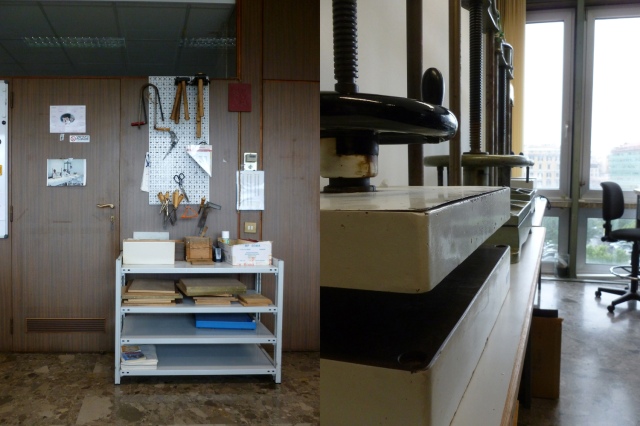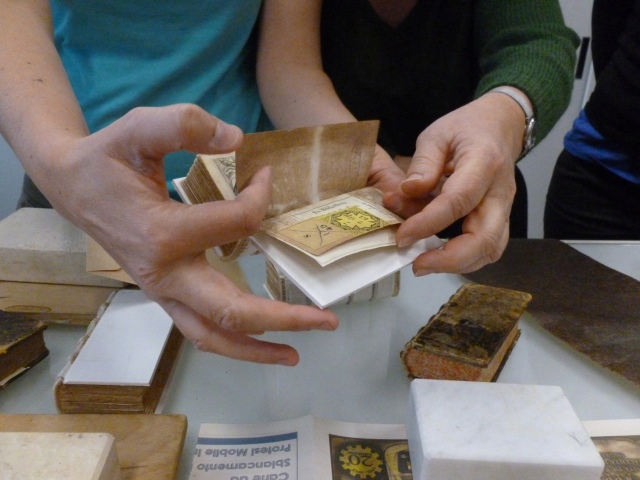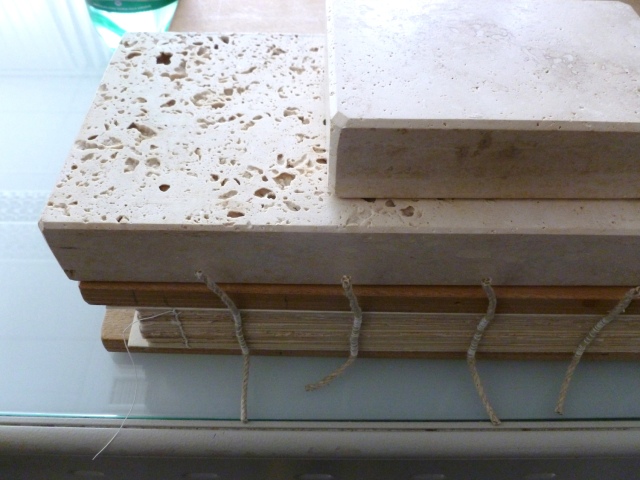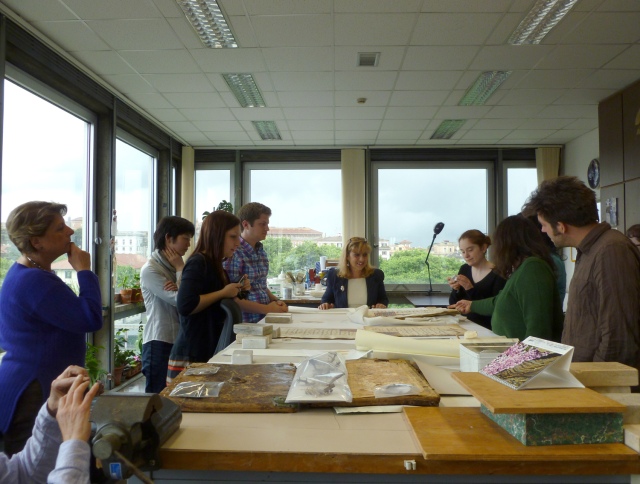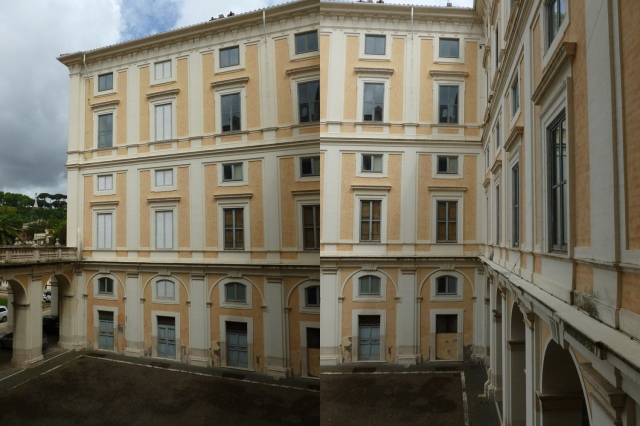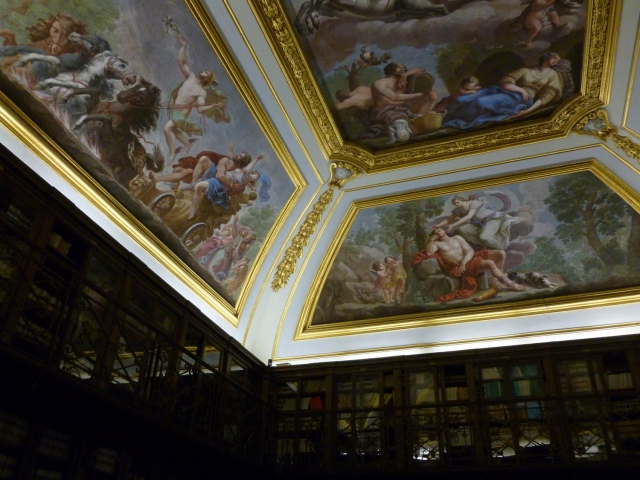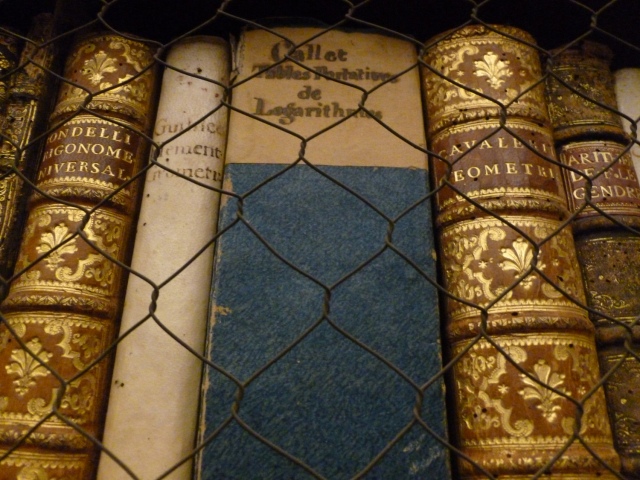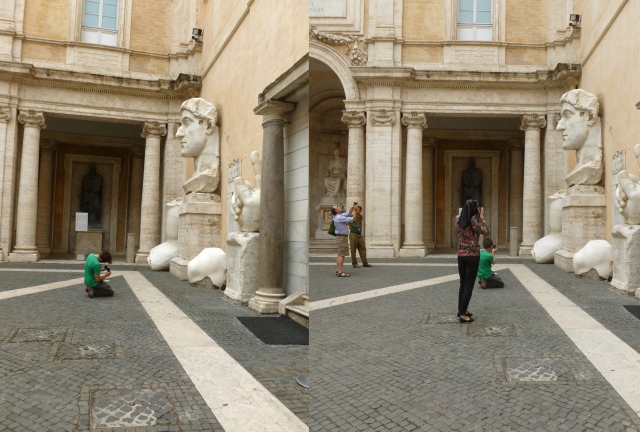German Stiffened Paper Bindings - 2
That there was once the idea that books were functional items, not fetishized objects that should take as long as possible to make and should include many unnecessary features.
That "good enough" is sometimes an appropriate, and even a noble goal, not an abomination.
Karen Hanmer (4/26/2012)
click link to read more :
STUDY TOUR IN ROME
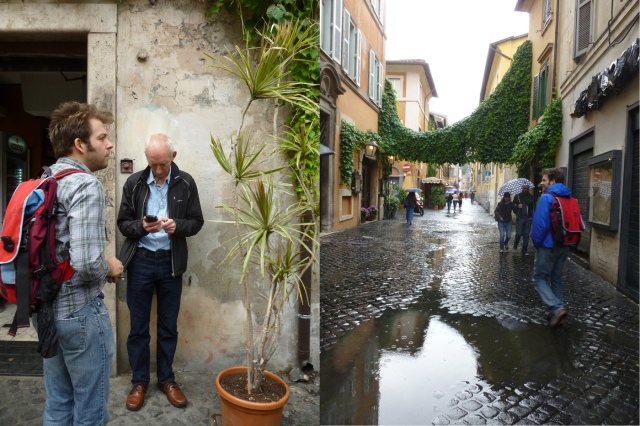 Each year most of the conservation departments at West Dean have a study tour, and this time the Books students went to Rome! It was my first time in Italy—we had pizza and gelato and went to the Biblioteca Nazionale, ICCROM, and the Lincei Library, and walked until our feet wanted to fall off.
Each year most of the conservation departments at West Dean have a study tour, and this time the Books students went to Rome! It was my first time in Italy—we had pizza and gelato and went to the Biblioteca Nazionale, ICCROM, and the Lincei Library, and walked until our feet wanted to fall off.First, the Biblioteca Nazionale, which has one conservation lab to care for both its general and special collections:
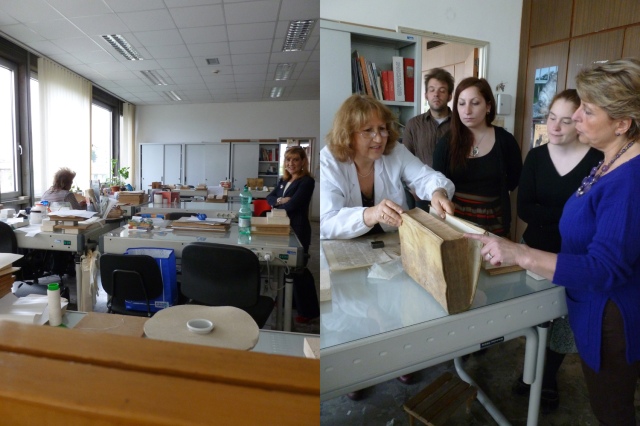
One of the conservators was working on rebinding this set of tiny books (above; one of the ones that didn’t need rebinding is visible below), which had been resewn on new cords and what looked like a laminate of two layers of museum board for the boards. One displayed this interesting selective discoloration on the front flyleaf (below), which wasn’t obviously explained by anything nearby, particularly given the bookplates and library labels on the pastedown that spanned both the colored and discolored area.
Did you notice the blocks of marble and travertine that they use for weights? It must be readily available in Italy—I didn’t see a single metal weight (ours in England and at home in the US are usually lead or iron, sometimes brick, wrapped in cloth).
We spent a long time looking at a manuscript they had to disbind to treat the components (wooden boards, metal furniture, parchment leaves) separately before getting it all back together. They explained that they prefer not to be so interventive but in this case, like for the books above, it was unavoidable. It was nice for us to see the evidence of various rebindings and refurbishings the manuscript had already been through, and to talk through the logistics of such a large project.
_________________
____

 ICCROM in the rain: the International Centre for the Study of the Preservation and Restoration of Cultural Property (never did understand how that got abbreviated to ICCROM) is an interesting organization; it’s an intergovernmental organization founded by UNESCO and runs training courses, maintains this library and research center in Rome, and generally attempts to contribute to the field and advocate for us out in the world. Even though the site is in Italy, the official languages are French and English. We could hear a huge thunderstorm outside as we learned how to use the catalog and got an overview of the library collections and a presentation about the organization and its goals and activities.
ICCROM in the rain: the International Centre for the Study of the Preservation and Restoration of Cultural Property (never did understand how that got abbreviated to ICCROM) is an interesting organization; it’s an intergovernmental organization founded by UNESCO and runs training courses, maintains this library and research center in Rome, and generally attempts to contribute to the field and advocate for us out in the world. Even though the site is in Italy, the official languages are French and English. We could hear a huge thunderstorm outside as we learned how to use the catalog and got an overview of the library collections and a presentation about the organization and its goals and activities.________________
____
My photos from the Lincei library are all of the collection, which we saw before the conservation lab and before my camera’s SD card started acting up. The library’s site does a better job than I’ll ever do of describing the collection, so I’ll leave it to you to get all the details straight from the horse’s mouth, but briefly: the Accademia dei Lincei—the Lyncean Academy—was founded in 1603 by Federico Cesi (you can read more about him & the Accademia here as well); Galileo joined in 1611. The Accademia collected and published books and amassed an important collection in all of the classical subjects. The library was donated to the people of Rome and the collection is publicly accessible in person as well as in several online digitization projects.
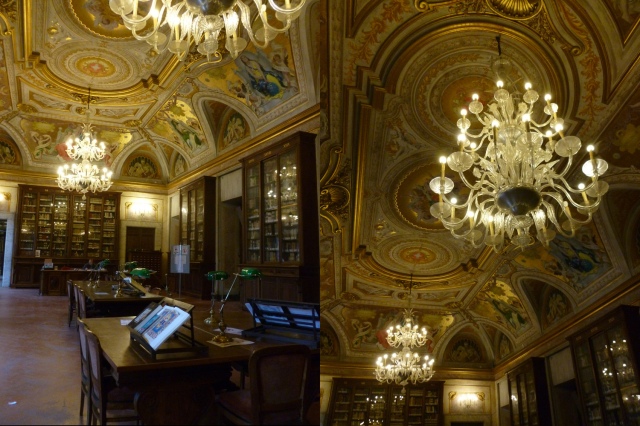 Above: the stunning reading room. Much of the older collection is on open display in a series of rooms with ornate ceiling decoration, with the books behind glass- or wire-paneled doors, and are preserved in the same format since the library was established in this building.
Above: the stunning reading room. Much of the older collection is on open display in a series of rooms with ornate ceiling decoration, with the books behind glass- or wire-paneled doors, and are preserved in the same format since the library was established in this building.Despite understanding intellectually the differences in regional binding styles, it’s always interesting to actually see it displayed. In Italy there were a lot of paper binding: block-printed (above middle, the patterned books), marbled (above right, middle blue/black book), and paste (below, blue book) papers. There were a lot of French-style calf bindings (below, the brown ones with gold), and the full parchment bindings were often quite thin skins.
I hope the library will forgive me documenting the more damaged books, but these are sometimes the most interesting for us: losses in the covering let us see the skeleton of the structure, as in these parchment bindings above that were attacked by pests, or this calf binding below that lost the leather at the head from use. The area just under the headbands often reveals the original edge coloring, unaffected by light and dirt, and in this case it shows how the threads were worked in groups of three (see where the three pink threads get tied down over the spine)—that would normally be covered up by the leather.
My favorite unexpected find (because I’m currently researching this style of binding) was a full set of Diderot’s Encyclopédie, with a contemporary binding: sprinkled calf with red goat title pieces, red edges and a green bookmark.
_______________
_____
We had time for some adventures on our own, too. Here’s Alex peacefully photographing sculptures in the Capitoline Museum, before a bunch of other tourists cottoned on to the idea:
There was a great exhibition of books and manuscripts from the Vatican Secret Archives, but no photos allowed.
The Instituto Nazionale per la Grafica had a stellar show of Tiepolo etchings, and a few Piranesi, some of which were matched up with their copper plates! Apparently the institute bought a lot of Piranesi plates some time ago and have been working on restoring and possibly reprinting them? There was a video about it in the gallery, but only touched the surface of what they were doing. (Below left, presses in the lobby of the gallery; below right, the two Piranesi etchings and their plates.)

